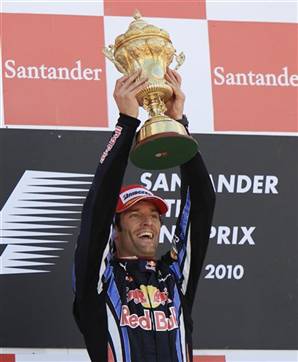Cast your mind back to the mid to late 1990s in Formula 1. There was a driver who was always trundling around, somewhere near the back of the field, in either a Footwork or a Tyrrell. This is when he managed to qualify. Any ideas? Here’s a picture to help you if you’re not sure.
Still unfamiliar with him? Well his name was Ricardo Rosset. Remember the name now? One of the many extremely average drivers to grace F1 around the turn of the century and today is his 42nd birthday so I thought the best way to celebrate that would be too remind people of his existence in F1.
A man who pulled off amazing feats of driving such as this in his debut season:
A man who played his part in one of the most spectacular crashes in F1 history. Look out for the white Tyrrell getting in on the action on 11 seconds:
And this is perhaps his finest piece of driving:
Rosset was the classic ‘pay driver’ in that he brought plenty of money to the table but was actually rather inept behind the wheel of an F1 car. Whilst commentating on a race weekend once, Murray Walker said there was a debate as to whether or not Rosset was F1 quality. Martin Brundle’s response?
“It’s a fairly short debate.”
After failing to qualify for five out of the 16 rounds in the 1998 championship, Rosset’s mechanics were known for swapping round the ‘t’ and ‘r’ in his name on the side of his car. Harsh as he didn’t drive like one, he just wasn’t very good. There’s a difference between being a rude driver and an inept one.
But what’s happened to him since I hear you ask.
Well after losing his Formula 1 seat at the end of 1998 he turned his back on motor racing and focused on his sportswear company. In 2008 he made a return to motor racing in the Brazilian GT3 Championship in a Ford GT from GT Racing, alongside film maker Walter Salles.
The pair were second after round one before claiming victory in the following race and at Interlagos where they also took pole for both races. Round three saw the them retire in race one before winning the second race ahead of Ford rivals Xandy Negrao and Andreas Mattheis. After three rounds there were six points of the top of the standings with 38, compared to Negrao and Mattheis’ 44.
By the time round five came along the Fords were dominating the championship and the Rosset/Salles combination took victory in race one at Rio de Janeiro, helping them to take over at the head of the championship, before a second place in race two. This left on 62 points, one ahead of Negrao and Mattheis.
The final round of the season, back at Interlagos saw Rosset and Salles win race one but it would not be enough for them to win the championship which went to the Matech Ford team drivers who finished 16 points ahead. However this showed a reasonably successful return to racing for the F1 reject.
Buoyed by this success, success in fact he hadn’t experienced since 1995 (yes he very nearly one a championship!), Rosset decided to buy a Footwork FA17, the car in which he made his début in Melbourne 1996, to race in one of the classic grand prix series.
However despite his success in Brazil, he’ll be remembered across the world for driving like this.





